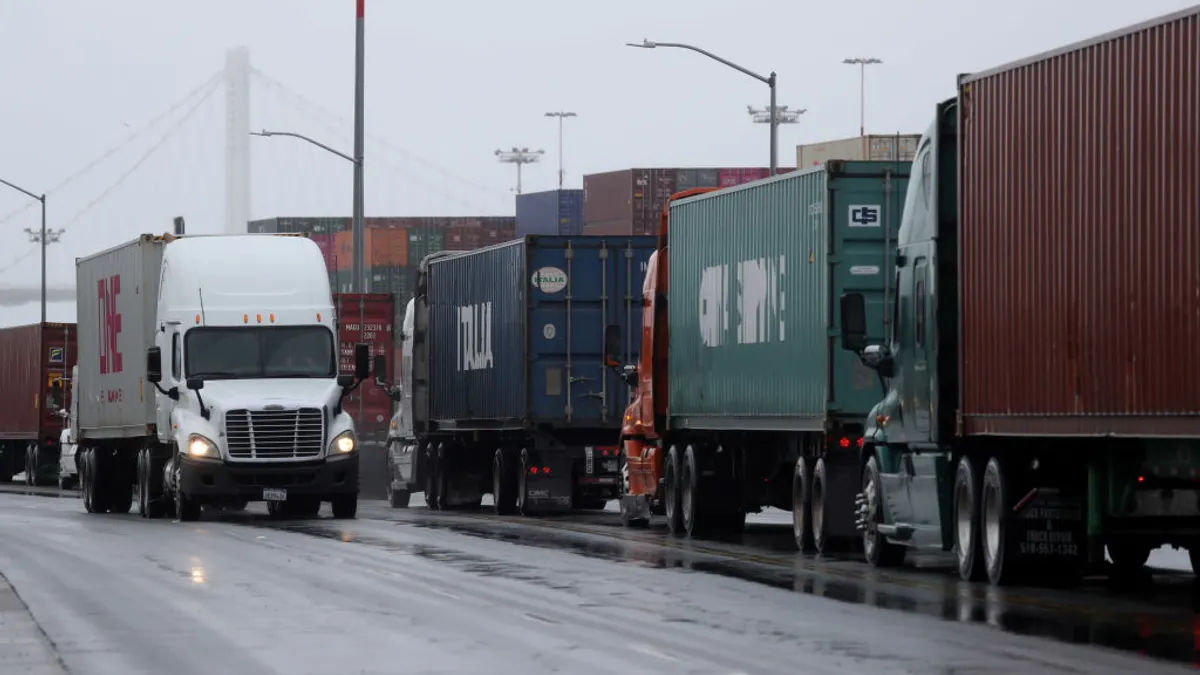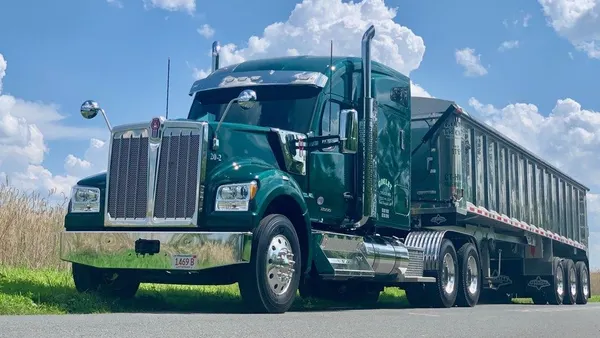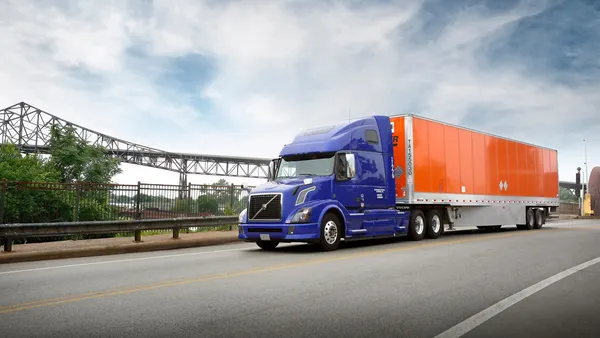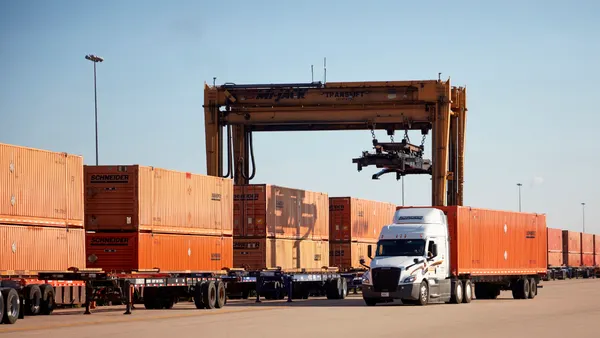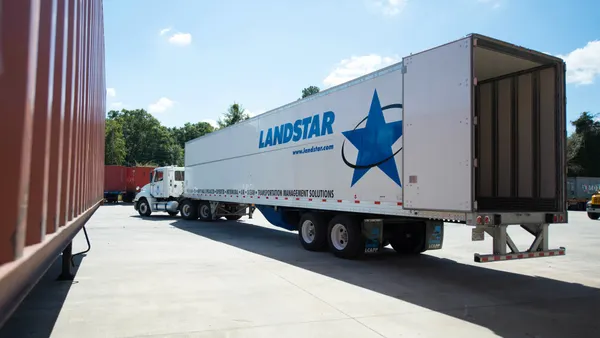Dive Brief:
- More trucking companies exited the market than entered it in Q3, based on a Trucking Dive analysis of Federal Motor Carrier Safety Administration operating authority filings.
- September data in particular appeared to show a significant drop in new players entering the market. That marked the lowest level of grants in operating authority since February 2025.
- "September had five Mondays, boosting revocations simply because of a calendar quirk," FTR Transportation Intelligence VP of Trucking Avery Vise said on a weekly podcast Oct. 6.
Recent snapshot suggests capacity is tightening
Dive Insight:
FMCSA operating authority data is just one reference point that doesn’t necessarily paint a full picture of trucking supply, demand and rates. For one, the data doesn’t capture fleets that have adjusted their driver levels to respond to demand challenges.
While carriers may view lower capacity as a positive sign, a mix of other factors suggest a turnaround in demand isn’t imminent.
“We remain far away from the threshold where the market fundamentally shifts in carriers' favor,” Jason Miller, a professor of supply chain management at Michigan State University, said in an Oct. 2 email. He noted a large spread exists between DAT’s dry van contract and spot rates.
“Beyond usual seasonal tightening in November and December, I don't expect current market dynamics to fundamentally change,” he said.
Miller also wrote in a LinkedIn post that the best data on dry van TL capacity is Quarterly Census of Employment and Wages data, which has a six-month lag.
That data, showing payrolls in March 2025 were around 505,000, “suggests that capacity has fallen back to levels we were at in early 2018,” he wrote. Compared to a year ago, payrolls were down 3.1% by 15,991, he noted.
Nevertheless, the FMCSA operating authority data has much less lag, and there's considerable contrast to where the industry was in the past.
“We still have a capacity overhang that is driven principally by the small end of the market,” Vise said last week during an online event with the Food Shippers of America. “That segment of the market still has 39% more drivers than it did before the pandemic.”







